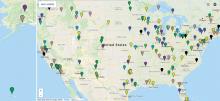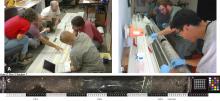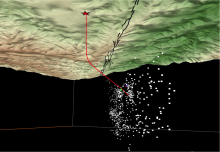Articles
2019

Fifteen Years of Earth Science Exploration
2019-02-14
The EarthScope National Office
Education Corner: Final inSights Issue
2019-02-14
Sharing Science through the EarthScope Speaker Series and Save the Date for the EarthScope Legacy Education and Outreach Virtual Workshop
San Andreas Fault Observatory at Depth
2019-02-14
The Gold Standard for Scientific Drilling Through an Active, Continental Transform Fault2018

New EarthScope Video!
2018-12-12
15 Years of Geoscience Discovery and Education in North America
EarthScope Top 10 Discoveries
2018-12-07
,2017

Tracking the Fluids in a Weak Fault
2017-10-12
EarthScope’s San Andreas Fault Observatory at Depth reveals the pathways of fluids carried along the fault’s fracture network2011

Fluid Pressure Spikes in SAFOD Rocks as Evidence of Microseismicity
2011-03-22
The San Andreas Fault (SAF) deforms by permanent creep and microseismicity in central California. Higher-thanhydrostatic fluid pressures, which could explain low strength and creep, were not detected during the San Andreas Fault Observatory at Depth (SAFO



